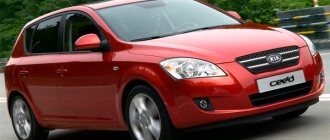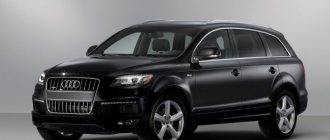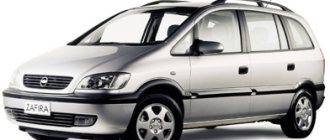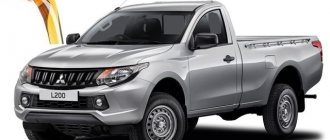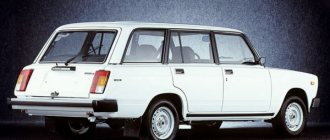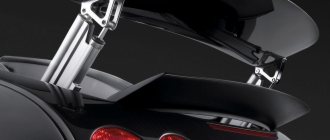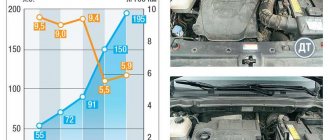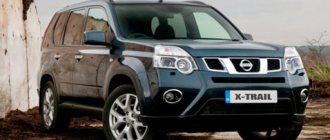Private faults and their repair
Millionaire motors, including the D6BR, do not have typical faults. Even by studying in detail the repair records of specialized Hyundai service stations, it will not be possible to identify chronic “pathologies” of the internal combustion engine in question. As a result, several conclusions can be drawn at once:
- D6BR is a truly reliable motor;
- Its service life and breakdowns depend solely on the owner himself, who, for trouble-free operation of the unit, only needs to adhere to the maintenance regulations and fill it only with high-quality raw materials.
Naturally, it is important not to forget about major repairs. As a standard, overhaul of D6BR engines is recommended every 200-250,000 rubles
It is better to refuse to carry out such a procedure with your own hands immediately. Due to the complexity of the structure and massiveness of the units, it is much more rational to entrust major repairs to professionals from specialized service stations.
D4HA - Hyundai 2.0 CRDi engine
The 2.0-liter Hyundai D4HA engine is the youngest representative of the series of diesel engines with the R index. Let's take a closer look at the engine.
The Hyundai D4HA 2.0-liter diesel engine was first introduced only in 2009. The new family of aluminum heavy fuel power units is designated by the letter R. Assembly is carried out at the company’s own facility and is produced only in South Korea.
The Hyundai R series also includes a 2.2-liter engine with the D4HB index.
| Type | in-line |
| Number of cylinders | 4 |
| Number of valves | 16 |
| Exact volume | 1995 cm³ |
| Cylinder diameter | 84 mm |
| Piston stroke | 90 mm |
| Supply system | Common Rail |
| Power | 136 - 185 hp |
| Torque | 320 - 400 Nm |
| Compression ratio | 16 — 16.5 |
| Fuel type | diesel |
| Environmental standards | Euro 4/5/6 |
Fuel consumption using the example of a 2021 Hyundai Tucson with a manual transmission:
| City | 6.7 liters |
| Route | 4.5 liters |
| Mixed | 5.3 liters |
- Common Rail power system from Bosch
- Piezoelectric injectors with a pressure of 1800 bar
- Both the head and block are made of aluminum
- Intake manifold and valve cover plastic
- e-VGT turbine with variable blade geometry
- To reduce vibration at the bottom, the balance shaft
- Timing chain, 2 camshafts and 16 valves
- Finally, hydraulic compensators appeared in the engine
- Naturally there is a particulate filter and USR
There are two versions of the LP 136 hp. and HP 185 hp.
Hyundai
| Tucson/ix35 2 | 2009 — 2015 |
| Tucson/ix35 3 | 2015 - present |
Kia
| Sportage 3 | 2010 — 2015 |
| Sportage 4 | 2015 - present |
- Overall good reliability of the unit
- Progressive technical solutions
- Does not require any expensive consumables
- Decent power characteristics
- Periodic knocking noises in the timing chain area
- Injectors are afraid of low-quality fuel
- Breakage of glow plugs during replacement
- High complexity of some repairs
Oil service
| Periodicity | once every 15,000 km |
| Lubricant volume in internal combustion engine | 8.5 liters |
| Needed for replacement | approximately 8 liters |
| What kind of oil | 5W-30, 5W-40 |
Gas distribution mechanism
| Timing drive type | chain |
| Peculiarities | two chains |
| Declared resource | is not limited |
| On practice | 100 - 150 thousand km |
Valve clearances
| Adjustment | not required |
| Adjustment principle | hydraulic compensators |
Replacing consumables
| Air filter | 15 thousand km |
| Fuel filter | 30 thousand km |
| Filter in the tank | 60 thousand km |
| Glow plugs | 60 thousand km |
| Auxiliary belt | not serviced |
| Coolant | 6 years or 120 thousand km |
Loud knocking or other noise in the timing chain area
It is necessary to clean the oil channel of the hydraulic tensioner from deposits.
Trouble due to clogged fuel injectors
You can’t do this without a specialized service.
Twitching and dips in traction due to dirty filters
It’s inexpensive to change the filter in the tank, but it won’t be easy with soot
Slight oil consumption during very dynamic driving
If you like to drive aggressively, be prepared to add half a liter of oil per 1000 km
The manufacturer claims a D4HA engine life of 250,000 km, but in practice it is higher.
| Minimum cost | 60,000 rubles |
| Average price on the secondary market | 90,000 rubles |
| Maximum cost | 160,000 rubles |
| Contract motor abroad | 3,150 euros |
| Buy such a new unit | 200,000 rubles |
Engine Maintenance Schedule
Hyundai Elantra J4
It was not previously noted that D6BR motors have a lifespan of millions. This state of affairs is quite real, and not drawn on paper
However, to achieve such a high efficiency from the engines in question, it is extremely important:
- Fill them with exclusively high-quality raw materials (from antifreeze and oil to fuel);
- Do not overload with work under heavy load conditions;
- Adhere to the manufacturer’s basic recommendations for servicing internal combustion engines, which are reflected in the relevant manuals and manuals.
If everything is extremely simple with the first two aspects of successful operation of the D6BR, then some questions may arise regarding the last one. To dispel them, let's look at the motor manufacturer's basic recommendations regarding its maintenance. These include the need:
Timely and complete change of lubricant in internal combustion engine cavities
What kind of oil to pour into the D6BR engine? Basically, it doesn't matter. The main thing is its compliance with the 10W-30 HD/DPF standard
The normal oil change interval is 10,000 kilometers. The volume of cavities of this 7.6-liter unit is amazing. According to some reports, it reaches 15 liters. However, during a planned replacement, it is enough to pour 12-13 liters of lubricant, no more. In addition to oil, it is also important to monitor the transmission fluid and coolant levels in the water system in the D6BR; Systematic replacement of consumables. These include: air filter; oil filter; elements of the cooling system and other components of the internal combustion engine (pump, gaskets and the like). The optimal frequency for changing the noted engine components is considered to be 30-40,000 kilometers;
Periodically changing spark plugs, or more precisely, glow plugs. On a diesel engine, the ignition system is quite specific and robust, but due to the heavy loads that the D6BR always experiences, you should always listen to it and check it for malfunctions. At a minimum, glow plugs must be changed every 80,000 kilometers. Any spark plugs can be used on the D6BR, the main thing is that they are oriented towards use in similar engines and adherence to the heat number rule. Purchasing parts from a KIA and Hyundai dealer will help you avoid any shortcomings.
In addition to the measures discussed, we must not forget about the basic aspects of servicing any engine. To be more precise, we are talking about:
- constant valve adjustment (every 20-30,000 kilometers);
- preventive compression measurements (every 15-17,000 kilometers);
- checking the basic components of the internal combustion engine, which include intake/exhaust manifolds, crankshaft, camshaft, pistons, ignition system, flywheel, cylinder head, and so on (every 60,000 kilometers).
D4HA Description and Specifications
D4HA engine
The merger of Kia and Hyundai led to the emergence of a large number of good engines used on cars of both concerns. One of these is the 2-liter D4HA, produced since 2010. It runs on diesel fuel and is equipped with an advanced CRDI system. The designers of this engine managed to ensure smooth running in the city and a fairly low noise level. This internal combustion engine meets EURO standards and is capable of operating for a long time (about 250 thousand km) if all the rules for its operation are met.
Often engine repair is much more expensive than buying a used analogue. This is one of the features of D4HA, which is compatible with several car models.
| Engine capacity, cc | 1995 |
| Maximum power, hp | 136 – 186 |
| Maximum torque, N*m (kg*m) at rpm. | 319 (33) / 2500; 320 (33) / 2500; 373 (38) / 2500; 392 (40) / 2500; 400 (41) / 2750; 402 (41) / 2500; 402 (41) / 2750 |
| Fuel used | Diesel fuel |
| Fuel consumption, l/100 km | 5.9 – 8.1 |
| engine's type | 4-cylinder, in-line, direct injection |
| CO2 emissions, g/km | 149 – 189 |
| Number of valves per cylinder | 4 |
| Maximum power, hp (kW) at rpm | 136 (100) / 4000; 184 (135) / 4000; 185 (136) / 4000; 186 (137) / 4000 |
| Supercharger | Turbine |
| Start-stop system | manufacturer's option |
| What cars was it installed on? | Hyundai ix35 (05.2013 – 12.2015) restyling, suv 1st generation; Hyundai Tucson (03.2015 – present) suv 3rd generation; Kia Sportage (03.2016 – present) suv 4th generation, QL; Hyundai Santa Fe suv 4th generation TM and suv 2nd generation SM |
Description D6BR
People close to the automotive industry are probably familiar with numerous passenger models from the KIA and Hyundai automakers. Thanks to their low cost, reliability and good technical characteristics, the popularity of South Korean-made passenger cars is not even questioned. However, few people know that in addition to producing sedans, hatchbacks, crossovers and similar cars, Koreans are also engaged in mass production of heavy vehicles, for example, buses and trucks. Naturally, components for them are created directly at the KIA and Hyundai factories. We will consider one of the most traction engines of South Korean production called “D6BR” today.
The concept of the diesel engines under consideration involves the use of 6-cylinders with 2 valves each. The location of these, of course, is in a row. Turbocharging is available in almost all variations of the D6BR engines, with the exception of some formations that are used on short trucks and small buses. By the way, only Hyundai models – HD120 trucks and Aero Town buses – are currently equipped with these internal combustion engines as standard. The use of D6BR began in the early 00s of this century and continues to this day. Naturally, motors can be periodically upgraded.
Engines of current Hyundai passenger car models
Hyundai uses a wide variety of engines, with one model intended for different markets often equipped with different engines. Therefore, here we will consider only those engines that are used in Hyundai cars intended for sale in Russia.
The current range of engines for Hyundai passenger cars is as follows:
• Gamma 1.4 (MPi, petrol, 1396 cm3, 100 hp, i30); • Gamma 1.4 (MPi, petrol, 1396 cm3, 107 hp, Solaris); • Gamma 1.6 (MPi, petrol, 1591 cm3, 123 hp, Solaris); • Gamma 1.6 (MPi, petrol, 1591 cm3, 130 hp, i30); • Gamma 1.6 (MPi, petrol, 1591 cm3, 132 hp, Elantra, Veloster); • Nu 1.8 (MPi, petrol, 1797 cm3, 150 hp, Elantra); • Nu 2.0 (MPi, petrol, 1999 cm3, 150 hp, i40, ix35); • Theta II 2.4 (MPi, petrol, 173 hp, 2359 cm3, H1); • Theta II 2.4 (MPi, petrol, 180 hp, Grandeur); • Theta II 2.4 (MPi, petrol, 175 hp, Santa Fe); • Lambda II 3.0 (GDi, V6, petrol, 249 hp, Genesis); • Lambda II 3.0 (MPi, V6, petrol, 2999 cm3, 250 hp, Grandeur); • Lambda II 3.3 (MPi, V6, petrol, 3342 cm3, 271 hp, Grand Santa Fe); • Lambda II 3.8 (GDi, V6, gasoline, 3778 cm3, 315 hp, Genesis); • Lambda II 3.8 (GDi (new modification), V6, gasoline, 3778 cm3, 334 hp, Equus); • Tau 5.0 (GDi (new modification). V8, gasoline, 5038 cm3, 430 hp, Equus); • U II 1.6 (diesel, 1582 cm3, 128 hp, i30); • U II 1.7 (diesel, 1685 cm3, 136 hp, i40); • U II 2.0 (diesel, 136 hp, ix35); • U II 2.0D (diesel, 184 hp, ix35); • R 2.2 (diesel, 197 hp, Santa Fe, Grand Santa Fe); • A II 2.5 (diesel, 2497 cm3, 116 hp, 16 valves, H1); • A II 2.5 (diesel, 2497 cm3, 170 hp, 16 valves, H1).
Each line of engines has its own characteristics, technical characteristics and applicability.
Line "R"
Newer and more powerful diesel engines produced since 2009. They have a number of non-trivial design solutions, but in general they are similar to the engines described above (CRDi, DOHC, CVVT systems, VGT turbocharger, etc.). In Russia, the line is represented by three engines:
• D4HA (R 2.0, 136 hp, installed on ix35); • D4HA (R 2.0D, power increased to 184 hp, also installed on ix35); • D4HB (R 2.2., 197 hp, installed on Santa Fe and Grand Santa Fe).
This is one of the rare lines of Hyundai engines that are almost completely available to customers in Russia.
Directory and reviews of the D4HA engine for KIA
The D4HA is a water-cooled four-cylinder in-line engine. Engine power ranges from 136 hp. up to 184 hp with an engine capacity of 1995 cc. cm (2 liters)
| Factory marking | D4HA |
| Engine power | 100 kW / 136 hp |
| Engine capacity | 1995 cc cm. |
| Number of cylinders | 4 pieces |
| Number of valves | 16 pieces |
| Engine Manufacturer | KIA |
| Cylinder diameter | 84 mm |
| Piston stroke | 90 mm |
| Root supports | 5 items |
| Power index | 68 hp per 1 liter (1000 cc) volume |
| KIA SORENTO II (XM) | 11.2010 | on |
| KIA SORENTO II (XM) | 11.2010 | on |
| KIA SPORTAGE (SL) | 08.2012 | on |
| KIA SPORTAGE (SL) | 08.2012 | on |
| KIA SPORTAGE (SL) | 08.2010 | on |
| KIA SPORTAGE (SL) | 08.2010 | on |
| KIA SPORTAGE (SL) | 07.2010 | on |
| KIA SPORTAGE (SL) | 07.2010 | on |
- dvigateli.ru
- 02/01/2019
- 1
Photos
Shortcuts
D4HB - Hyundai 2.2 CRDi engine
The 2.2-liter Hyundai D4HB engine belongs to the new family of diesel units of the R series. Let's take a closer look at it.
The Hyundai D4HB 2.2-liter diesel engine was first introduced only in 2009. The newest series of aluminum engines running on heavy fuel is traditionally called R for short. These power units are assembled in South Korea at the company’s own facility.
The Hyundai R family also includes a 2.0-liter internal combustion engine with the D4HA index.
| Type | in-line |
| Number of cylinders | 4 |
| Number of valves | 16 |
| Exact volume | 2199 cm³ |
| Cylinder diameter | 85.4 mm |
| Piston stroke | 96 mm |
| Supply system | Common Rail |
| Power | 197 - 200 hp |
| Torque | 421 - 441 Nm |
| Compression ratio | 16 |
| Fuel type | diesel |
| Environmental standards | Euro 4/5/6 |
Fuel consumption using the example of a 2021 Hyundai Santa Fe with a manual transmission:
| City | 8.7 liters |
| Route | 5.4 liters |
| Mixed | 6.6 liters |
- Common Rail Bosch system with pressure 1800 bar
- Modern piezoelectric injectors
- The cylinder block and its head are cast from aluminum
- Plastic intake manifold and valve cover
- 2 camshafts and 16 valves, that is, DOHC
- e-VGT variable blade geometry turbine
- Lower balance shaft to reduce vibration
- The timing belt has a chain drive with a hydraulic tensioner
- Hydraulic compensators are finally provided
- Particulate filter and gas recirculation system
Hyundai
| Santa Fe 2 | 2010 — 2012 |
| Santa Fe 3 | 2012 — 2018 |
| Grandeur 5 | 2011 — 2016 |
| Grandeur 6 | 2016 - present |
Kia
| Sorento 2 | 2009 — 2014 |
| Sorento 3 | 2014 - present |
| Carnival 2 | 2010 — 2014 |
| Carnival 3 | 2014 - present |
- Reliability is above average
- Modern technical solutions
- Economical and environmentally friendly
- Good dynamic characteristics
- Requires qualified service
- Noise from the gas distribution mechanism
- Injectors don't like bad fuel
- Difficulties with replacing glow plugs
Oil service
| Periodicity | every 15,000 km |
| Lubricant volume in internal combustion engine | 8.5 liters |
| Needed for replacement | approximately 8 liters |
| What kind of oil | 5W-30, 5W-40 |
Gas distribution mechanism
| Timing drive type | chain |
| Peculiarities | two chains |
| Declared resource | is not limited |
| On practice | 100 - 150 thousand km |
Valve clearances
| Adjustment | not required |
| Adjustment principle | hydraulic compensators |
Replacing consumables
| Air filter | 15 thousand km |
| Fuel filter | 30 thousand km |
| Filter in the tank | 60 thousand km |
| Glow plugs | 60 thousand km |
| Auxiliary belt | not serviced |
| Coolant | 6 years or 120 thousand km |
Oil burner during aggressive driving
If you move dynamically, it can be up to 0.5 liters per 1000 km
Loud noises and knocking in the timing chain area
Bad oil clogs the hydraulic tensioner channel and requires cleaning
Troubles or stalls due to capricious piezoelectric injectors
You should only contact a specialized service.
Traction failures and twitching due to a clogged filter in the tank
A fuel pre-filter is inexpensive.
The concern claims a service life of the D4HB internal combustion engine of 250,000 km, but in practice it is longer.
| Minimum cost | 75,000 rubles |
| Average price on the secondary market | 150,000 rubles |
| Maximum cost | 190,000 rubles |
| Contract motor abroad | 2,880 euros |
| Buy such a new unit | 250,000 rubles |

